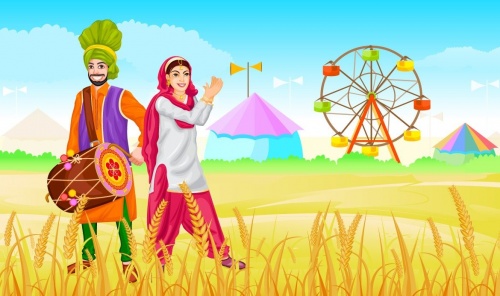

Why is Baisakhi celebrated and what is the story behind it
BY : Neha Jain – Cultural & Festival Content WriterTable of Content
SINDHI CULTURE: HISTORY AND THE CULTURAL DAY
Baishaki is the harvest festival celebration with great
Story Behind the celebration of Baisakhi
For the Sikh community, the occasion of Baisakhi is even more special and momentous. The holy festival of Baisakhi celebrates the birth of Khalsa. The stories go back many years. The tenth Sikh Guru, Guru Gobind Singh was the son of Guru Teg Bahadur. According to the historical viewpoint, Guru Teg Bahadur was beheaded publicly by the Mughal ruler Aurangzeb. The reason behind this incident was Guru Teg Bahadur, stood up for the rights of Hindus against the Muslim ruler. So after the death of Guru Teg Bahadur, his son, the tenth Sikh Guru, Guru Gobind Singh became the next Guru. In 1650, Punjab was in turmoil and was facing the corrupt rulers where people were given no rights, neither there was any law, nor justice. Especially, the weak were suffering constantly and quietly. Therefore, this is the day when Guru Gobind Singh wished to instill the strength & courage among all. At Anantapur, he assembled the whole Sikh community for
The Five K’s
The group of five men (The Panj Pyare) are comprised of Five symbols i.e, Kangha (comb), Kesh (uncut hair), Kara (a steel bangle), Katchera (underwear), and Kirpan (sword).
The Name of Five Panj Pyare
- Bhai Daya Singh
2. Bhai Dharam Singh
3. Bhai Himmat Singh
4. Bhai Muhkam Singh
5. Bhai Sahib Singh
Baisakhi Celebration
The Baisakhi celebration is mainly concentrated around Gurdwaras and in the open fields doing the Bhangra and Gidda dance.
An important ritual carried out during Baisakhi is 'Awat Pauni'. Here, people come together and harvest crops on vibrant beats of dhol and sing melodious folk songs.
“Nagar Kirtan” is another ritual carried out by Sikh Community on the special occasion of Baishaki. Nagar Kirtan literally translates to the "town hymn singing". People gather together and sing hymns and chants written in the Guru Granth Sahib -the Sikh holy book. The group is led by five Khalsa who are dressed up as Panj Pyaras, who carry the holy book with them as a mark of reverence.
In the morning, on the pious day of
The holy book is given a symbolic bath with milk and honey at Gurudwaras, on the special occasion of Baisakhi.
The holy book is then placed at the special throne with special care.
After that, the spiritual leaders read them loud, where the followers
Also, on this day
According to the tradition among
At noon, after
Sikhs celebrate this very important day of their religion with joy and devotion
Read More- SINDHI CULTURE HISTORY AND THE CULTURAL DAY
Significance & Celebration For Farmers
In
Baisakhi Fairs in Punjab
Fairs are also organized in some parts of Punjab. People participate in these fairs with great enthusiasm. Major attractions of Baisakhi Fairs are the bhangra and
Baisakhi Celebrations in India
Baisakhi coincides with the other festivals celebrations in other parts of India too. The auspicious day of Baisakhi is celebrated all over India though under different names and with
Read more- Why Jhulelal Jayanti celebrated?
Author: Neha Jain – Cultural & Festival Content Writer
Neha Jain is a festival writer with 7+ years’ experience explaining Indian rituals, traditions, and their cultural meaning, making complex customs accessible and engaging for today’s modern readers.






.png)